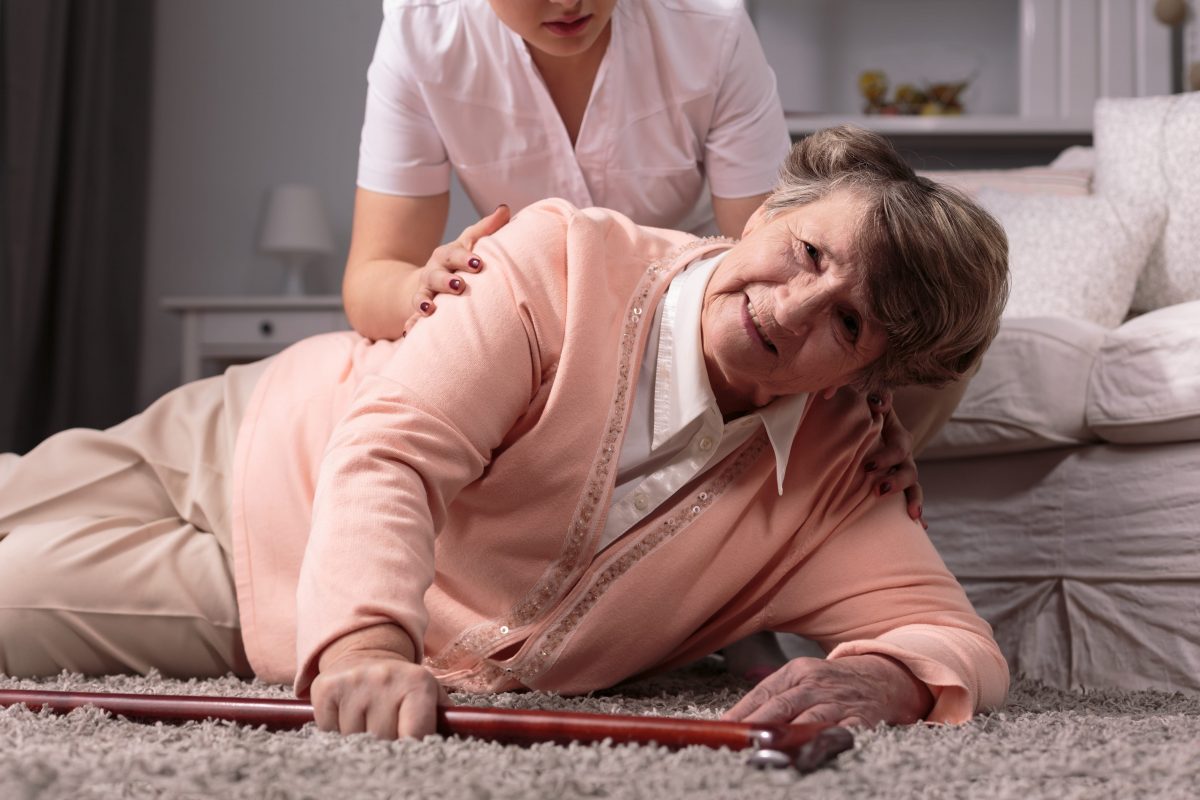It’s the moment that everyone fears: hearing that their loved one has been injured. At assisted living facilities, this moment is most likely to be spurred by a slip or fall. Slips and falls are by far the most common form of injury amongst assisted living facility residents and senior citizens in general; one in three senior citizens aged 65 and older experience a fall each year, and 20 to 30 percent of the above suffer from moderate to severe injuries as a result of the fall. As they grow older, their likelihood of falling grows even higher, with adults aged 85 and older being four times more likely to fall than those between the age of 65 and 74.
A fall can have a number of negative results. As mentioned above, many falls result in moderate to severe injuries, which include hip fractures, other broken bones, head injuries, lacerations, and sprains. In fact, the majority of fractures in older adults are caused by slips and falls, with over 95 percent of hip fractures stemming from falls. However, these calamities are not the only negative result. Being injured in a fall, particularly if the injury is a fracture, can reduce mobility and possible increase the likelihood of premature death. Slips and falls can also have negative mental impacts; an adult who has fallen (especially if they were injured) could find themselves feeling anguished as a result of the event, and might limit their activities and social engagements due to their fear of falling (or they may be unable to be as active as they were before if they were injured in the fall). This can lead to the resident feeling lonely, isolated, and helpless.
Because they are responsible for their health and welfare, there are a number of things that assisted living facility staff can do to decrease the risk of slips and falls for their residents:
- Keep it clean. The facility should be kept clean and all walkways should be clear of potential obstacles. In addition, the National Center for Assisted Living recommends that facilities discourage throw rugs and crowded furniture in personal quarters, as these can easily lead to slips and falls.
- Keep an eye on the bathrooms. The most common setting for slips and falls is the bathroom, due to the smooth surfaces and the potential for water to increase slipperiness. Provide handrails and other things for residents to grip while in the bathroom, and make sure to keep the floors clean and dry, with mats in the showers to prevent slipping.
- Supervise. There should be enough staff on hand to keep an eye on residents and see if anyone is having trouble, and to be able to quickly help any resident who does slip or fall.
- Have grips and rails available. The bathroom may be the most common scene, but slips and falls can occur anywhere. Facilities should, wherever possible, install handrails and other grips wherever residents might need to walk.
- Establish a notification system. If a resident were to fall, the facility should be able to know about it and help them as quickly as possible. We recommend establishing an alert system that will allow residents to reach a nurse in the event of an accident, injury, or emergency.
- Coordinate with the doctor. If a resident falls, it will likely be necessary to take them to the hospital. However, before falls occur, the facility should coordinate with doctors and physical therapists in order to discuss whether residents should be using walkers or canes, or to assess residents’ medication and see whether it could be causing dizziness, which can increase the risk of slips and falls.
About Caitlin Morgan
Managing the numerous risks assisted living facilities is critical to the success of a facility, its census numbers, reputation in the community, and in reducing potential accidents and injuries. At Caitlin Morgan, we specialize in providing broad and competitive insurance programs for assisted living facilities in addition to offering risk management solutions to help stem losses. We can assist you in putting in place the right program for your clients. Give us a call at 317.575.4440.


